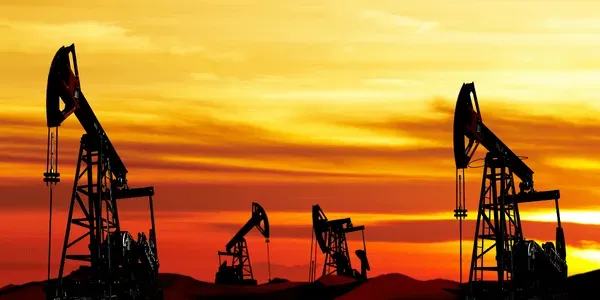弊社最新リサーチの一例
弊社最新のレポート、ウェビナー、ポッドキャストをご覧下さい

2022年12月28日
Energy Aspects is excited to announce the launch of Trading the Transition , our new service that analyses how the outlook for the decarbonisation drive over the next decade is affecting today’s energy landscape. Although the transition to net-zero emissions is a multi-decade effort, governmental policies and investment decisions by market actors are already having an impact on energy markets. The effects of these deep trends on tradeable markets will only be further amplified in the future. Understanding the massive swings in energy supply and demand taking place will enable market participants to confidently plan for the years ahead, especially as capital allocations shift in response to market signals. Traditional supply sources will still be needed well into the future, but renewables will take big bites out of demand in places, causing energy markets to pull in many directions at once. Policies seeking to guide the speed and direction of the transition will only amplify the challenge. While there is increasing awareness of climate targets and long-term policy solutions, we seek to identify the energy transition’s short-term challenges and analyse how these are shaping markets right now. We explore the contours of the energy transition’s outlook over the next 5–10 years, with a focus on: Global decarbonisation trends and what they mean for today’s markets. Policy and regulatory developments that will affect the demand, supply and pricing of traditional liquids products over the medium term. How technological developments in hydrogen, CCUS, biofuels, EVs and other areas will influence market dynamics. We aim to help you make informed trading and investment decisions amid the rapid shifts taking place. We’re excited to see what the future will bring.

2022年12月28日
Anticipation for the 26th annual Conference of Parties to the UNFCCC (COP26), an international summit where countries and stakeholders discuss climate policy, is building. This year's conference takes place in Glasgow and is scheduled to run from 31 October to 12 November. COP tends to face grandiose expectations by an audience that wants to see big headlines, but in reality, COP tends to be as much about agreeing on finer policy details as it is on committing to big-picture climate measures. This year's event is seen as particularly critical because several previously agreed climate pledges were set to have come to fruition by this point. At the same time, global leaders are under pressure to address high energy prices—even as this conference pushes them to meet still more ambitious climate targets. This year's COP seeks to make progress on three key issues: 1. Finalising the Paris Agreement rulebook, particularly Article 6 The bulk of the Paris Agreement’s rulebook was agreed at COP24. But detailed rules relating to Article 6—the use of market and non-market tools as part of compliance strategies—have been difficult to establish. In essence, this is about the role of carbon offsets, under which abatement made in one country is paid for and used for compliance by a different country. Agreeing the detailed rules for Article 6 would pave the way for countries to use international offsets to meet national climate targets, and it could provide the foundation for a new UNFCCC international carbon offset mechanism for use under the Paris Agreement. It would let policymakers use international offsets for compliance in domestic trading schemes. This would allow the offset market to scale up with private money and commoditise itself in ways unlikely to happen without such an agreement in place. The rule would also stimulate a larger international market for offsets by introducing sovereign buyers to the mix. While we do not think the EU will allow offset use in its ETS—at least not before 2030—the airline industry’s offset scheme (CORSIA) needs such rules to be in place for it to have any degree of environmental integrity. 2. Agreeing on financial support provisions to developing countries COP15 established that OECD countries would mobilise $100 billion every year in climate finance by 2020 to help developing countries adapt to and mitigate further climate change. However, the conference did not formalise details on how individual countries would pay for the scheme, instead relying on each country's own financial pledges. COP26 will first look to ensure that countries adhere to their existing pledges, and formal negotiations are expected to start on post-2025 finance goals. With OECD nations not yet having stumped up $100 billion for the fund, there seems to be a significant gap between what the developing world wants and what the developed world will offer. 3. Encouraging countries to advance net-zero targets The UNFCCC will continue to call for more ambitious Nationally Determined Contributions (NDCs) at COP26 as most countries are still quite far from delivering on their Paris agreement goals. The NDCs set out a country’s targets for reducing greenhouse gas emissions. Countries will face pressure to create both concrete policies and long-term strategies that will deliver climate neutrality—particularly for G20 nations by 2050. Australia and Saudi Arabia announced new pledges to reach net-zero emissions by 2050 and 2060, respectively, and China recently released a strategy to achieve a net-zero target that reaffirms previous targets and policies. Most countries tend to announce major revisions prior to these conferences to generate maximum press coverage, so this week could see more announcements than we get during the event. Big questions on rising energy costs Global fossil fuel demand is responding far more slowly than supply to growing environmental concerns. Economies recovering from the effects of Covid-19 are pushing energy demand up along with them. A growing world population and expanding middle class will propel global energy consumption still higher. At the same time, continuing underinvestment in fossil fuel supply will mean higher oil and gas prices in the coming years. COP will pressure countries to take more action. However, if governments are serious about alleviating the most severe effects of climate change, the focus cannot just be on legislation that shifts supply. They must also tackle demand. Read our recent views on rising energy costs in the Financial Times, where our Director of Research Amrita Sen offers a detailed take on the need to address fossil fuel demand in order to ensure a smooth and equitable energy transition. The energy markets are going through a massive transformation. To access our research across various energy markets, write to us at contact@energyaspects.com or request your trial here .

2022年12月28日
Natural gas liquids (NGLs) sit at the crossroads of the global energy industry, connecting the oil, natural gas, oil products and petrochemicals markets. NGLs serve as a feedstock in the petrochemicals sector, as fuel for home heating and cooking, and as autogas in cars, busses, and other modes of transport. Meanwhile, refineries consume NGLs like butane and yield LPG in order to meet various seasonal gasoline specifications. The deeply important role NGLs play in the wide range of markets that require them means that effectively forecasting global NGLs supply trends requires a multi-pronged approach. With this fundamental understanding, and by identifying missing links within the global NGLs market, we have recently rolled out significant enhancements to our NGLs data service, including: NGLs global supply data forecasts by purity product and by country. Global gas plant supply by purity product and by country. Refinery NGLs production by purity product and by country. Granular US supply and production data broken down by PADD. In addition to this service, we offer five-year supply forecasts for ethane, propane, butane, LPG and C5+. Energy Aspects’ NGLs data service is one of the most comprehensive in the market, offering users coverage of purity products and supply forecasts that are updated monthly by drawing extensively from our expertise in analysing sectors across the energy value chain —upstream, midstream and downstream. We also provide deep granularity in our data, including distinctions between refinery and gas plant production, to promote transparency regarding supply sources and keep potential buyers well informed about future feedstock purchasing decisions. Overcoming data limitations in the global NGLs market Upstream : The NGLs market lacks standardised reporting and holistic visibility, but we have found that the basis for all future NGLs supply can ultimately be linked to the global outlook for gas supply. As such, we tie our NGLs supply projections back to our forecasts for natural gas production as well as for production of crude oil in countries with large amounts of associated gas. We also assess the liquid content of natural gas from each region we analyse, which can vary by field and basin within a country, to determine the production ratios between natural gas and NGLs. For example, associated gas contains more liquid than non-associated gas, and therefore produces greater of NGLs. Midstream: We have employed an infrastructure-based approach to verify aggregated production data for countries or regions that lack timely data. Specifically, this involves assessing various infrastructure that connects wellheads to gas processing plants. Operators in many countries successfully employ new technology to enhance efficiencies at existing plants, which allows for greater NGLs extraction. Therefore, we model capacity creep in ways that go deeper than monitoring announced projects for capacity expansion, by basing our analysis on historical trends as well as expected uptake rates for future technologies. Downstream: Where data on refinery NGLs output are not readily available, we use our country-specific refining model to assess LPG yields based on typical crude diets and refinery configurations. Yields typically swing in a range of 2–8%, depending on the complexity of the refinery. Furthermore, we draw from our global steam cracker and propane dehydrogenation (PDH) unit databases to aggregate the domestic feedstock needs of a country’s petrochemical sector, allowing our analysts to provide a further layer of back-testing to our supply forecasts. To find out more about our NGLs supply data service, write to us at sales @energyaspects.com or visit here to access our modelling methodology and assumptions, which details the underpinnings our global NGLs supply forecast. Additional resources: Global NGLs market: five-year outlook webinar









